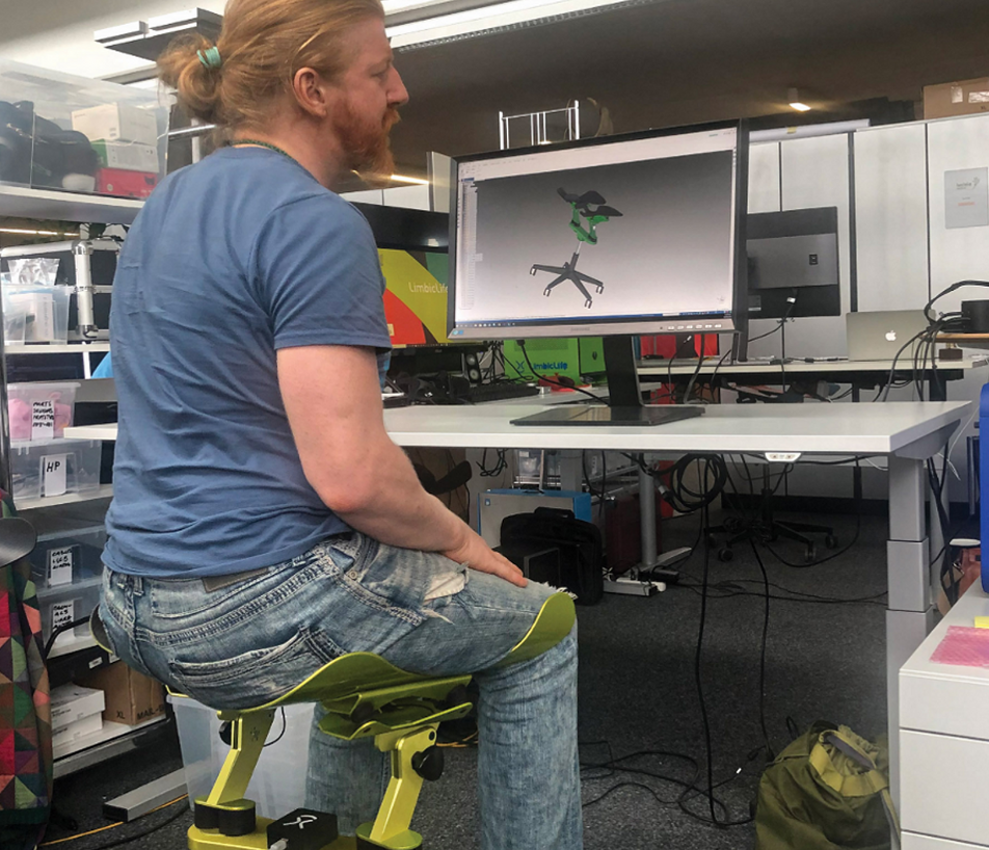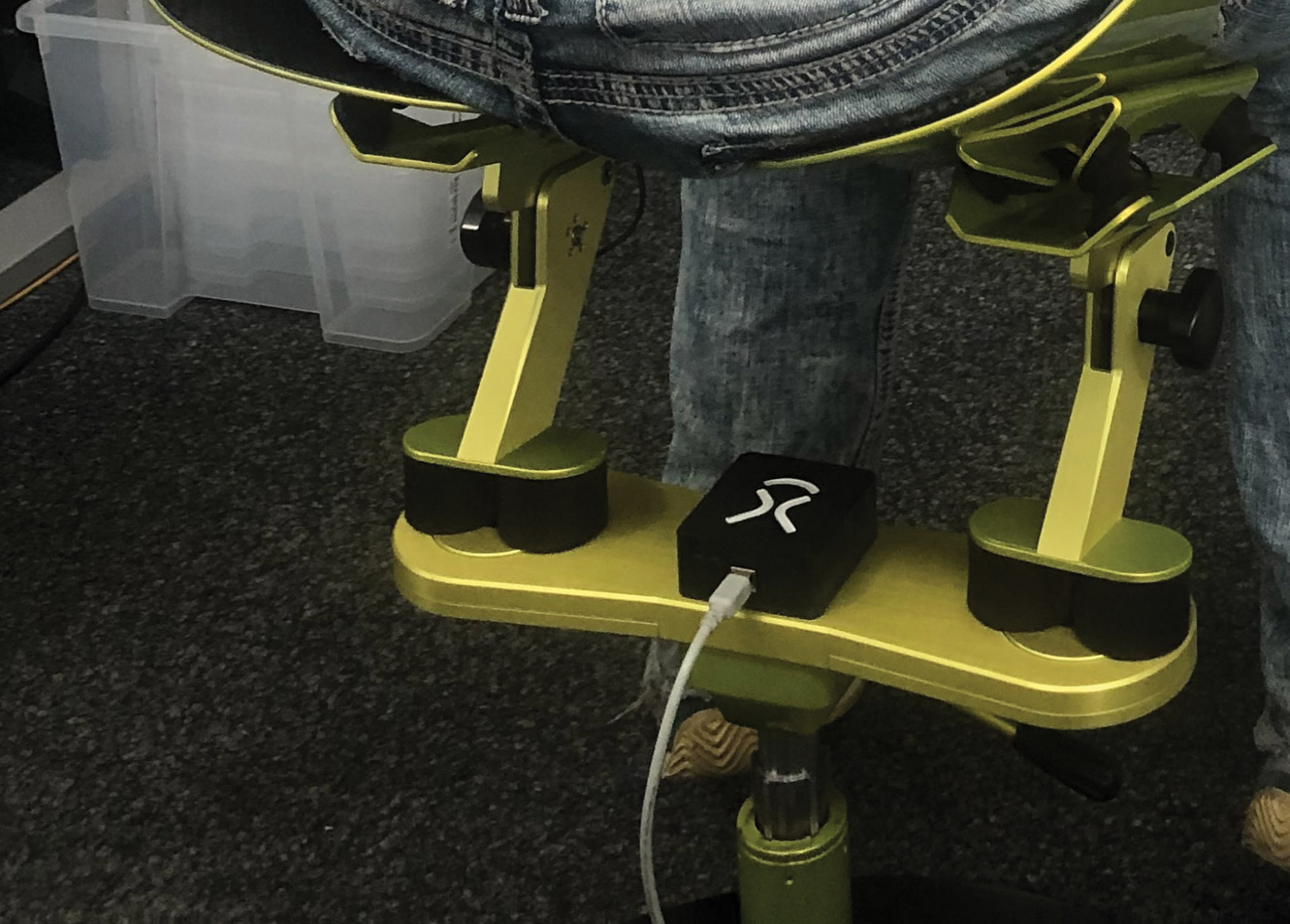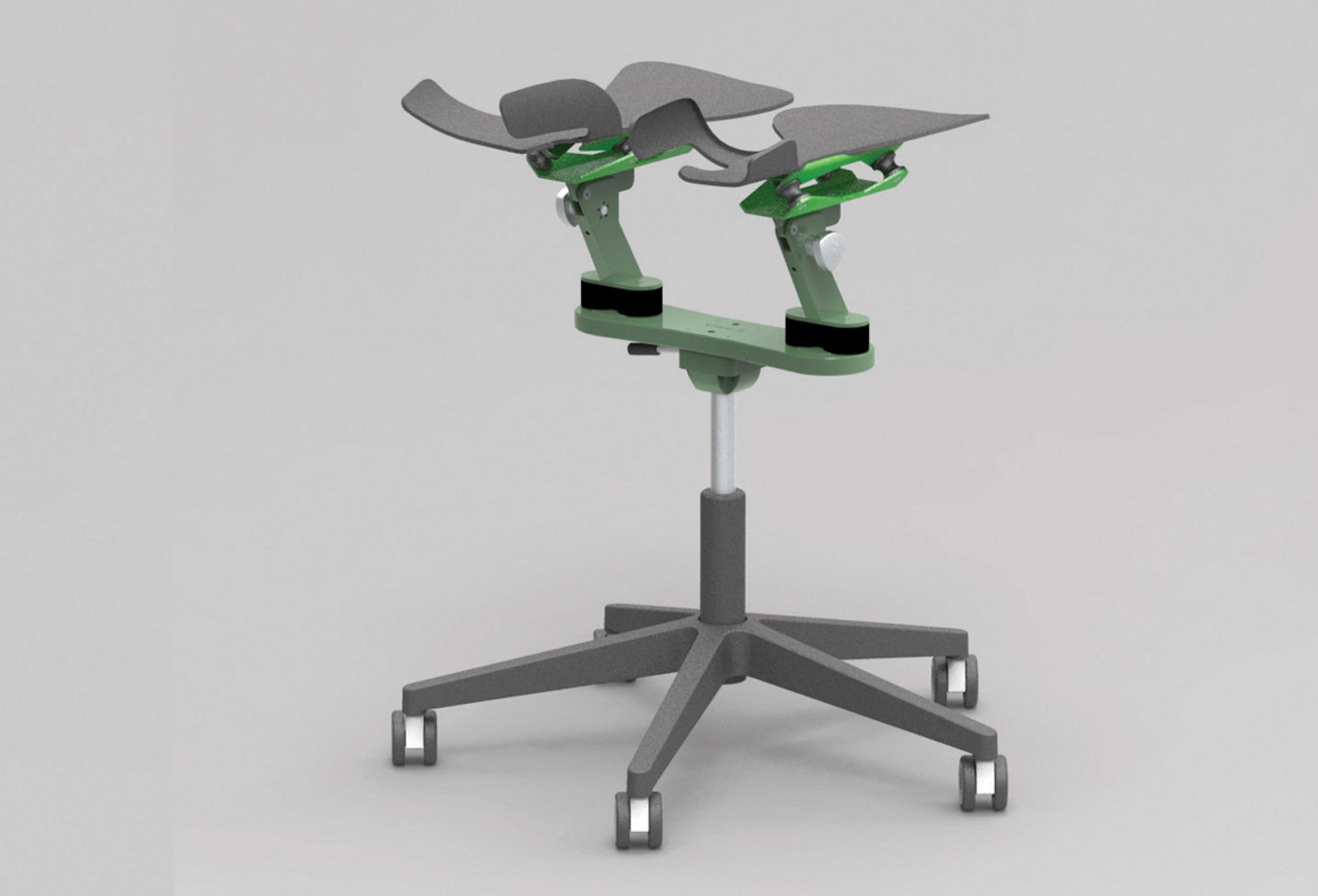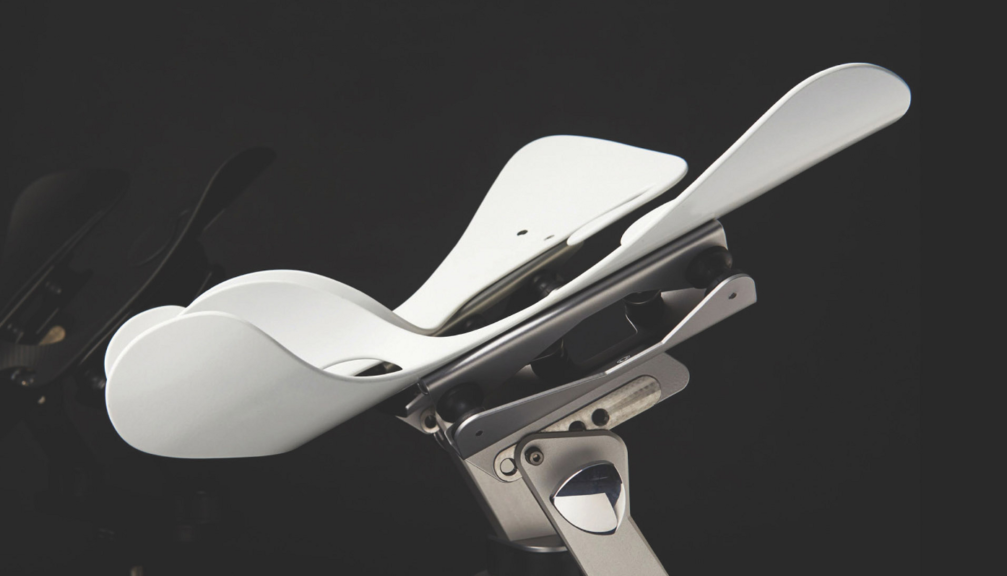The Limbic Chair, marketed by Zurich-based Limbic Life, is the result of years of work, experience and insight.
Designed on the principles of weightless sitting and freedom of movement for its occupant, motion sensors in the chair allow precise control of virtual reality (VR) and other applications in gaming, medical diagnostics and engineering.
It’s the brainchild of Dr Patrik Künzler, director and founder of Limbic Life, who established the company following time spent at the Massachusetts Institute of Technology (MIT) Media Lab in Cambridge, Massachusetts.
“The principle of ‘form follows function’ originated in the 20th century,” says Künzler. “Today, we develop products that are fun, healthy and useful based on neuroscience and medicine.”
In this respect, his academic credentials are impeccable: a doctorate in medicine from the University of Zurich and post-doctoral research at the Picower Institute of Learning and Memory (also part of MIT), where he studied neurology and the limbic system.

The limbic system, Künzler explains, “connects the body with emotions, and emotions with the thinking brain.”
In evolutionary terms, he continues, the limbic system was developed during the mammalian development phase.
“The ‘mammal brain’, which all mammals have, regulates sensations such as concern for offspring, fear, love, lust, play instinct and learning through imitation.
There are certain movements, which we call incentivised movements, that can cause and express feelings of happiness.”
Limbic – Weightless sitting
Together with students from the MIT Media Laboratory, Künzler developed the chair as an example of a new approach to product development based on research.
Instead of following the traditional pattern of form follows function, they wanted to create a chair that conveys feelings of flying and weightlessness.
Initial sketches were drawn on paper, and then prototypes were created from laminated plywood.
The sensation of free, weightless sitting, the team discovered, could be conveyed by two independent, specially suspended shells, supporting the sitter’s thighs.
In a follow-up project, the fast and precise movement impulses of the body, identified from brain research, were used to control a game console.
For this purpose, the shells were equipped with motion sensors, a game programme was analysed and control options were programmed.
“We digitised the chair and developed an input device from it,” says Künzler. “This confirmed the thesis that some movement sequences can be controlled faster and more precisely with the legs than with the hands.”

Limbic – An idea becomes a product
Today, over 200 customers around the world own one or more custom-made Limbic Chairs, which are recognised as remedies by some health insurance companies.
Such is its success that the chair is being redesigned for mass production, with a view to extending its benefits to a larger audience.
In 2016, manufacturer Schätti AG Metallwarenfabrik (Schätti) became a development and production partner of Limbic Life.
The company assists product developers and designers in converting their designs into products that can be manufactured in order to meet market demand for them.
Schätti has extensive experience with designing products as varied as chairs, espresso machines, mobile whiteboards and light-emitting diode (LED) lamps.
This involves it using sheet metal processing, computer numerical control (CNC) machining, profile processing and robot and laser welding.
Additional finishing and assembly processes make the company a complete service provider for individual parts and for finished products that may be comprised of anywhere between 20 and 20,000 pieces.
Schätti’s team of designers uses Solid Edge software and other solutions from Siemens Digital Industries Software, finding it to be an easy-to-learn solution, offering the perfect blend of functions, according to founder and designer Thomas Schätti.
The company’s goal was to advance the Limbic Chair from the individual production stage to series production.
Solid Edge helped make its goal a reality, enabling the company to develop a shell shape made of carbon fibers suitable for all users.
These seat shells will soon be injection-moulded from plastic.
The company will achieve this by generating CNC programmes in Siemens’ NX manufacturing software, which connects the Schätti partner plant in Bulgaria through a continuous process chain.
All project-related data is managed in Siemens’ Teamcenter software, running in the background during design with Solid Edge.
This supports approvals, design and production parts lists, and enables change management and version statuses to be mapped across multiple locations.
“Relying on Teamcenter as a single source for information, we have achieved an enormous streamlining of the processes,” says Thomas Schätti.
“Now, we’re extending the application to purchasing and production.” With this software infrastructure in place at his company, the Limbic Chair is expected to be ready some time this year for series production.

More than fun and games
With series production, Limbic Life wants to give more people the chance to sit in a healthy and relaxed way that makes movement fun.
The chair’s integrated motion sensors, the data from which is processed by a microcomputer embedded in the chair and transferred via a universal serial bus (USB) cable or Wi-Fi network, further increase the value of leisure time.
“We develop computer games that are fun and can be operated with the Limbic Chair,” says Mark van Raai, astrophysicist, gaming expert and chief technology officer at Limbic Chair. “We also offer support to developers who want to use it to control their games.” But with the advent of increasingly complex computer applications in the workplace, there are other use cases to be explored.
In these professional situations, the musculoskeletal system is often underused and the eyes, head and hands often overloaded.
The Limbic Chair therefore offers a way to decrease an office worker’s daily stress and strain.
For example, an ophthalmologist could scan the human eye, model it in Solid Edge and freely move in a VR model of the scan, using the Limbic Chair.
This would leave their hands free to perform interventions.
In radiology, meanwhile, magnetic resonance imaging (MRI) images might be ergonomically controlled, too.
“With the legs, VR applications can be controlled very precisely, while the hands remain free for other tasks,” Künzler explains.
For this reason, Limbic Life has created a certified interface to Solid Edge.
Instead of a 3D mouse, the Limbic Chair can be used to fly through a 3D model, zoom in and out, and rotate it.
In this way, hands are left free for making annotations using a keyboard, marking up specific areas of the model, or completing bill-of-materials information.
The hope now for Limbic Life is that Solid Edge users will take advantage of its Limbic Chair to complete their work in a more efficient, healthier way.






